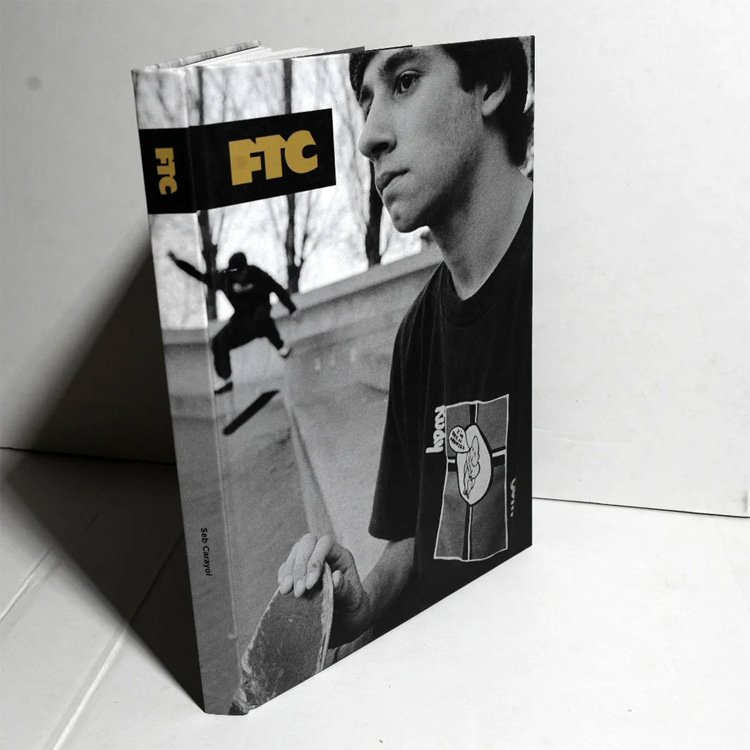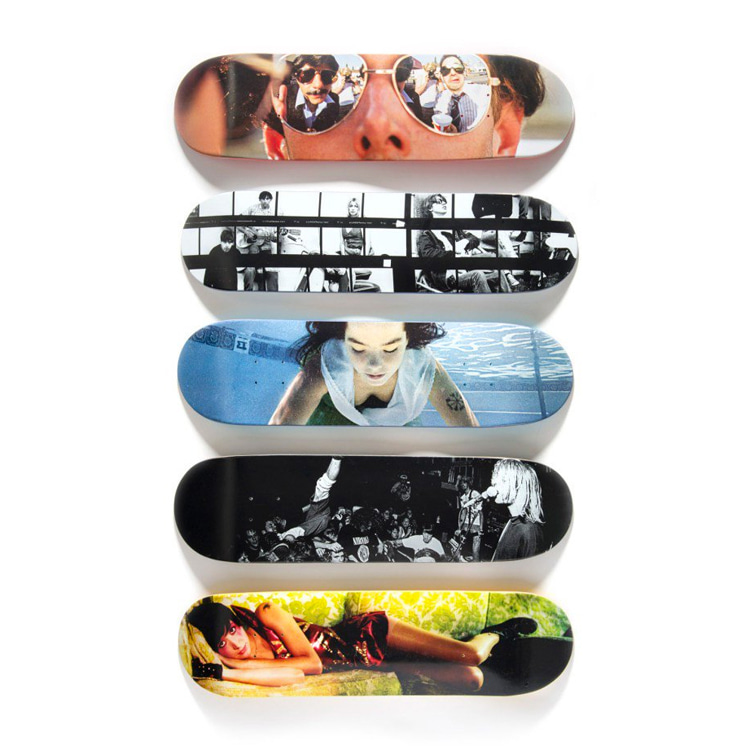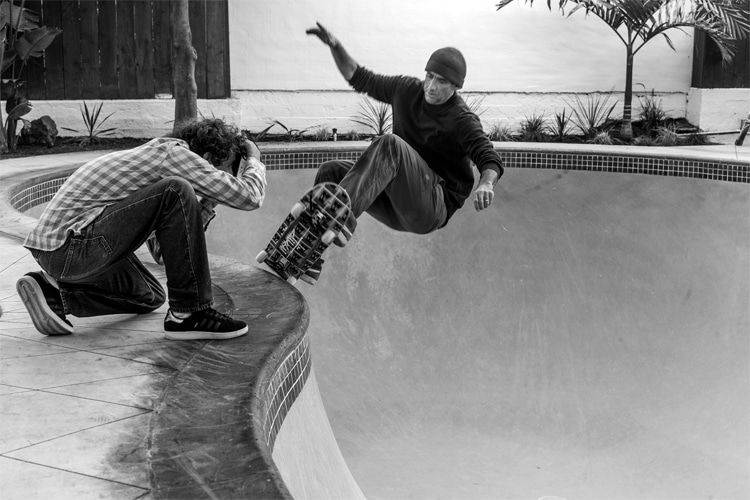In the vibrant heart of the mid-20th century, amid a whirlwind of social and cultural revolutions, a nascent phenomenon surged through the crumbled concrete of America's urban landscapes - skateboarding.
In this compelling tableau, a captivating cast of photographers, armed with their lens and love for the sport, captured the essence of this rebellious subculture, unwittingly catalyzing its ascension into mainstream recognition.
Often underappreciated, the role of these artists in the rise of skateboarding was as pivotal as the boards, wheels, and daring spirits that fueled the sport.
The following profiles weave a narrative of how these photographers, through iconic stills and action shots, turned skateboarding from an audacious pastime into a cultural revolution.
The images these photographers captured in the 1960s, 1970s, 1980s, and 1990s were far more than mere documentation of a sporting event - they were spirited snapshots of an evolving era.
They caught breathtaking stunts and the fearless spirit and tenacity of a youth culture embracing radical self-expression.
These photographers also played a critical role in catapulting skateboarding into the wider public consciousness.
Through their work, the underground world of skateboarding permeated into mainstream media, featured in publications that were once oblivious to the sport's existence.
Moreover, the emergence of skateboard photography coincided with and fostered the birth of a burgeoning industry.
The visual spectacle of the sport, as seen through their lens, caught the eye of entrepreneurs and businesses, leading to the genesis of the modern skate industry.
Beyond the sport itself, these photographers helped develop a unique street culture.
Their photos became a mirror reflecting a fusion of visual arts, music, and advertising, all favoring the recognition and acceptance of skateboarding.
These images are now woven into the tapestry of pop culture, encapsulating the relentless spirit of an era that still resonates today.
Glen E. Friedman

A true pioneer in skateboarding photography, Glen E. Friedman's camera lens has narrated the story of the skateboarding revolution like no other.
Born in Los Angeles in 1962, Friedman was the perfect age to witness firsthand the gritty and edgy rise of skateboarding during the 1970s and 1980s.
As a teenager, Friedman began capturing images of his friends skateboarding in the now-famous Dogtown neighborhood.
While still in high school, he began contributing to SkateBoarder magazine, effectively cementing his position as one of the key chroniclers of the burgeoning skateboarding scene.
His work was gritty, raw, and authentic, a mirror reflecting the defiant spirit of a subculture about to explode onto the mainstream stage.
Friedman's lens captured more than just gravity-defying tricks; it encapsulated the audacious ethos of a generation.
He was renowned for his ability to portray the dynamism and audacity of his subjects.
The Dogtown boys, Tony Alva and Jay Adams, among others, came to life through Friedman's photos, their rebellious energy immortalized on film.
Among Friedman's vast array of work, some images stand as icons in the annals of skateboarding history.
One such photograph is the mid-air shot of Jay Adams at the Brentwood school banks, taken in 1976.
This image, with Adams suspended in a moment of fearless exhilaration, encapsulates the radical spirit of the era.
It is an artistic statement as much as a historical document, testifying to the raw, untamed energy that fueled the sport's evolution.
Friedman's photography wasn't confined to skateboarding, either. He expanded his focus to encompass the worlds of punk rock and hip hop, capturing seminal acts such as Black Flag and Run D.M.C with the same raw intensity he brought to his skateboarding work.
This fusion of music and skateboarding further solidified his place in the annals of youth culture documentation.
In his images, we perceive more than skateboarding tricks and punk rock shows - we witness a youthful rebellion that defined an era.
Glen E. Friedman, through his evocative photography, has managed to eternalize these vibrant moments of cultural history, affirming his legacy as one of the most influential skate photographers of all time.
J. Grant Brittain

Immersed in skateboarding photography for over four decades, J. Grant Brittain is a name that resounds with immense respect and admiration in the sport's history.
Born in 1955 and raised in California, Brittain's journey with skateboarding began in the late 1970s at the Del Mar Skate Ranch, where he managed the skate shop.
Brittain's photography journey commenced quite unexpectedly when he borrowed a camera to document the dazzling feats of skateboarders at the ranch.
Self-taught and driven by a profound fascination for the sport, he soon found himself capturing images that transcended mere sporting events.
His photographs encapsulated the essence of skateboarding culture - its rebellious spirit, creativity, and camaraderie.
His photographic prowess and an intimate understanding of the sport led to his involvement with Thrasher Magazine and, later, the co-founding of Transworld Skateboarding Magazine in 1983.
His work as a photo editor and photographer for Transworld over the next two decades would influence the visual direction of skateboard media and, by extension, the sport itself.
Brittain's portfolio is a testament to his ability to capture moments and narratives.
His 1987 shot of Tod Swank at Del Mar Skate Ranch, titled "Push," is an iconic image.
In it, we see the dynamic tension between skater and board, a snapshot of the literal and metaphorical push that drives the sport.
While Brittain's career spans several decades and countless iconic images, his commitment to telling the skateboarder's story sets him apart.
His lens has given us more than just images; it has provided us with a rich visual narrative that continues to shape the landscape of skateboarding culture.
C. R. Stecyk III
Emerging from the swirling, sandy haze of Dogtown, California, in the 1970s, C.R. Stecyk III stands as a beacon in skateboarding photography.
An artist, writer, and filmmaker, Stecyk has captured the skate subculture in all its vibrant, gritty detail, paving the way for the sport's journey into the mainstream.
Born in 1950, Stecyk found his creative calling amid the rough-and-tumble world of the Zephyr skateboard team, also known as the Z-Boys.
In the derelict landscapes of a rundown neighborhood and the empty swimming pools of Venice, he began to document the unbridled energy and artistry of this raw youth culture that was soon to redefine the notion of sport.
Stecyk's photography offered an unfiltered window into the heart of skateboarding.
His shots, infused with raw, kinetic energy, introduced the skateboarding subculture to a broader audience.
His work featured prominently in SkateBoarder magazine, a conduit through which the rest of the world glimpsed the audacious, counter-cultural ethos that lay at the heart of skateboarding.
One of Stecyk's iconic images features Tony Alva soaring above an empty pool, the board beneath his feet defying gravity as he rises from a curl of blue.
The power of this image lies not just in its depiction of a remarkable trick but in the way it encapsulates the daring spirit of skateboarding.
It affirms freedom and rebellion, a testament to a culture that thrived on pushing boundaries.
Stecyk's contribution extends beyond photography.
He penned a series of influential articles, "The Dogtown Articles," for SkateBoarder magazine, offering an intimate insider's perspective on the skateboarding scene.
His writing and evocative photography created a compelling narrative that resonated with audiences far beyond Dogtown.
In many ways, C.R. Stecyk III's work forms the backbone of skateboarding's visual and cultural narrative.
His photographs, articles, and films have provided a multifaceted exploration of a culture that refused to conform, creating a lasting impact on how we perceive the skateboarding world.
Mike O'Meally
Hailing from Sydney, Australia, Mike O'Meally's love for skateboarding and passion for capturing moments have propelled him to the forefront of skateboarding photography.
His work over the last three decades is revered for its raw emotion and unique perspective, offering a window into the soul of the sport.
Born in 1970, O'Meally discovered skateboarding at a young age.
But it wasn't until 1987, after stumbling upon an old camera at home, that he began combining his love for the sport with photography.
What began as a hobby quickly became a profound passion, leading him to document skateboarding scenes locally and, eventually, across the globe.
O'Meally's break into international acclaim came in the 1990s when he moved to California, the pulsating heart of global skateboarding.
His work soon graced the pages of prominent publications like Transworld Skateboarding and SkateBoarder Magazine, showcasing his keen eye for capturing both the action and the subtler, off-board moments that define the culture.
Beyond capturing riding skaters, O'Meally's work often provides a profound, intimate look at the skateboarding community.
His candid portraits of famous and lesser-known skateboarders reveal the depth of his subjects and the diversity and cohesion within the culture.
Tobin Yelland

Deeply rooted in skateboarding since age 15, Tobin Yelland is an artist whose craft transcends the boundaries of sports photography.
Born in 1970 in Berkeley, California, Yelland discovered his passion for skateboarding and photography around the same time, in the mid-1980s, merging the two into a fruitful career that has spanned more than three decades.
Having picked up a camera at an early age, Yelland's images bear the authenticity of a skateboarder turned self-taught photographer.
His photographs uniquely communicate not only the excitement of the sport but also the nuances of the culture, lifestyle, and individual personalities that shape it.
Yelland's work first came into the limelight in the late 1980s when Thrasher published his photographs.
His images, characterized by their raw energy and intimate framing, have since graced the pages of numerous skateboard and lifestyle magazines, highlighting his keen eye for the narrative within the action.
One particularly iconic shot from Yelland's portfolio features Mark Gonzales riding down Lafayette Street in 1996.
But Yelland's work is not limited to capturing feats of athletic prowess.
His portraits often provide an intimate look into the life of the skaters, depicting them in quieter moments of introspection off their boards.
These images are as much a celebration of the sport as they are a documentation of the lifestyle and spirit surrounding it.
In addition to his photographic work, Yelland has expanded his creative repertoire to include film and commercial work, always maintaining his unique perspective rooted in skate culture.
Skin Phillips
Skin Phillips is a household name in skate photography, synonymous with compelling images that have brought the dynamic sport to life for over thirty years.
Born in Swansea, Wales, in 1965, Phillips's pathway to becoming one of the most esteemed photographers in the skateboarding world was as vibrant and compelling as his images.
Phillips discovered skateboarding in his early teens and, with it, a fascination for how photography could illuminate the high-speed drama and artistry of the sport.
Armed with a camera and a keen eye for details, he began documenting his local skateboarding scene, blending his passion for the sport with a blossoming talent for visual storytelling.
However, Phillips's contributions to skateboarding extend beyond his spectacular action shots.
As the editor-in-chief of Transworld Skateboarding, he played an instrumental role in shaping the visual culture of skateboarding and championing the sport's evolution and growth.
Furthermore, his commitment to the sport and its community is evident in his involvement in the Adidas Skateboarding team, where he continues to foster talent and promote the culture and lifestyle of skateboarding.
Spike Jonze

Born as Adam Spiegel in Rockville, Maryland, in 1969, Jonze's journey from an enthusiastic skateboarder to an award-winning filmmaker and photographer is a testament to his creative genius and deep-rooted love for the sport.
Jonze's encounter with skateboarding and photography happened almost simultaneously in his adolescence.
He began documenting his skateboarding exploits and those of his friends, quickly garnering recognition for his unconventional approach to capturing the sport's energy, audacity, and culture.
His breakthrough came in the 1990s when he joined Transworld Skateboarding.
His work stood out for its distinct style, blending action and portraiture, often in unexpected, whimsical ways.
Jonze was not just photographing skateboarders; he was narrating stories, capturing moments of triumph, risk, and the sheer joy of the sport.
One iconic image that exemplifies Jonze's creative prowess is a shot of Mark Gonzales riding in a pristine, empty swimming pool.
The dramatic picture, laced with a sense of serenity, encapsulates Jonze's ability to bring out the juxtaposition of tranquility and movement inherent in skateboarding.
However, Spike Jonze's contributions to skate culture extend far beyond his compelling photography.
He is also the co-creator of the trailblazing "Video Days," a short film featuring the talent of legendary skaters, which is often hailed as one of the most influential skateboarding films ever made.
From there, Jonze embarked on a prolific film and music video career, winning numerous awards, including an Academy Award for Best Original Screenplay for "Her" in 2014.
Despite his broader success, Jonze has always stayed connected to his skateboarding roots, using his platform to highlight and promote the sport.
In Spike Jonze, we see more than a celebrated photographer or acclaimed filmmaker; we see a true skateboarding aficionado.
Ed Templeton

Ed Templeton, born on July 28, 1972, in Garden Grove, California, has shaped a unique path for himself in skateboarding and the arts.
He is best known for his professional skateboarding career, vivid artistic works, and compelling photography, which has chronicled the reality of life in the suburbs.
Templeton's fascination with skateboarding began in his teenage years, and by the age of 20, he had turned professional.
His fearless and inventive style made him a favorite in the skating community, extending his influence beyond the skate park.
In 1994, he and his wife, Deanna, co-founded Toy Machine, a successful skateboard company that is an influential player in the industry.
However, an injury in the late 1990s prompted Templeton to explore his interest in art and photography more extensively.
His artistic style, often featuring dystopian themes and focusing on the experiences of suburban youth, has been exhibited in art galleries worldwide, including the Museum of Contemporary Art in Los Angeles and the Palais de Tokyo in Paris.
Much like his art, Templeton's photography captures the unfiltered essence of youth culture and the realities of street life.
His photographic collections, such as "Teenage Smokers" and "Teenage Kissers," present candid snapshots of adolescence, bringing a certain humanity and authenticity to his subjects.
As a self-taught artist and photographer, Templeton maintains a raw, engaging aesthetic that echoes his skateboarding ethos - fearlessly explorative and authentically expressive.
His book "Deformer," a culmination of an 11-year personal project, received significant acclaim, further cementing his status as a powerful visual storyteller.
Warren Bolster

Among the luminaries of skate photography, Warren Bolster's name shines with a certain radiance.
Born in 1947 in Manhasset, New York, Bolster would come to shape skateboarding's visual story in remarkable ways.
In his early years, Bolster became enamored with surfing, a passion that would eventually steer his life's trajectory.
Moving to Hawaii in the late 1960s to pursue this passion, he soon discovered another talent - photography.
Bolster's knack for capturing the exhilarating moments of surfing caught the attention of Surfer magazine, where he served as a photo editor in his early twenties.
However, it was on the skate planet that Bolster truly left his mark.
After returning to California in the mid-1970s, he was captivated by the burgeoning skate culture.
He became the editor of SkateBoarder magazine, where his photographic and editorial contributions helped elevate the publication to legendary status.
One of Bolster's most memorable images captures Tony Alva carving a vertical arc on a pool's concrete edge, the intensity of the moment amplified by the stark contrast between the skater's fluid motion and the rigid geometry of the urban landscape.
The riding session at Arizona Desert Pipes was also memorable.
This image and many others captured the essence of skateboarding's adventurous spirit, embodying the essence of a generation that refused to be confined by traditional norms.
Warren Bolster's photography was a visual chronicle of skateboarding's transition from a niche hobby to a recognized sport and cultural phenomenon. His images didn't merely document; they conveyed the exhilaration, freedom, and rebellion at the heart of skateboarding.
Sadly, Bolster passed away in 2006.
